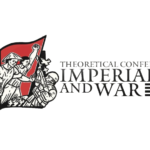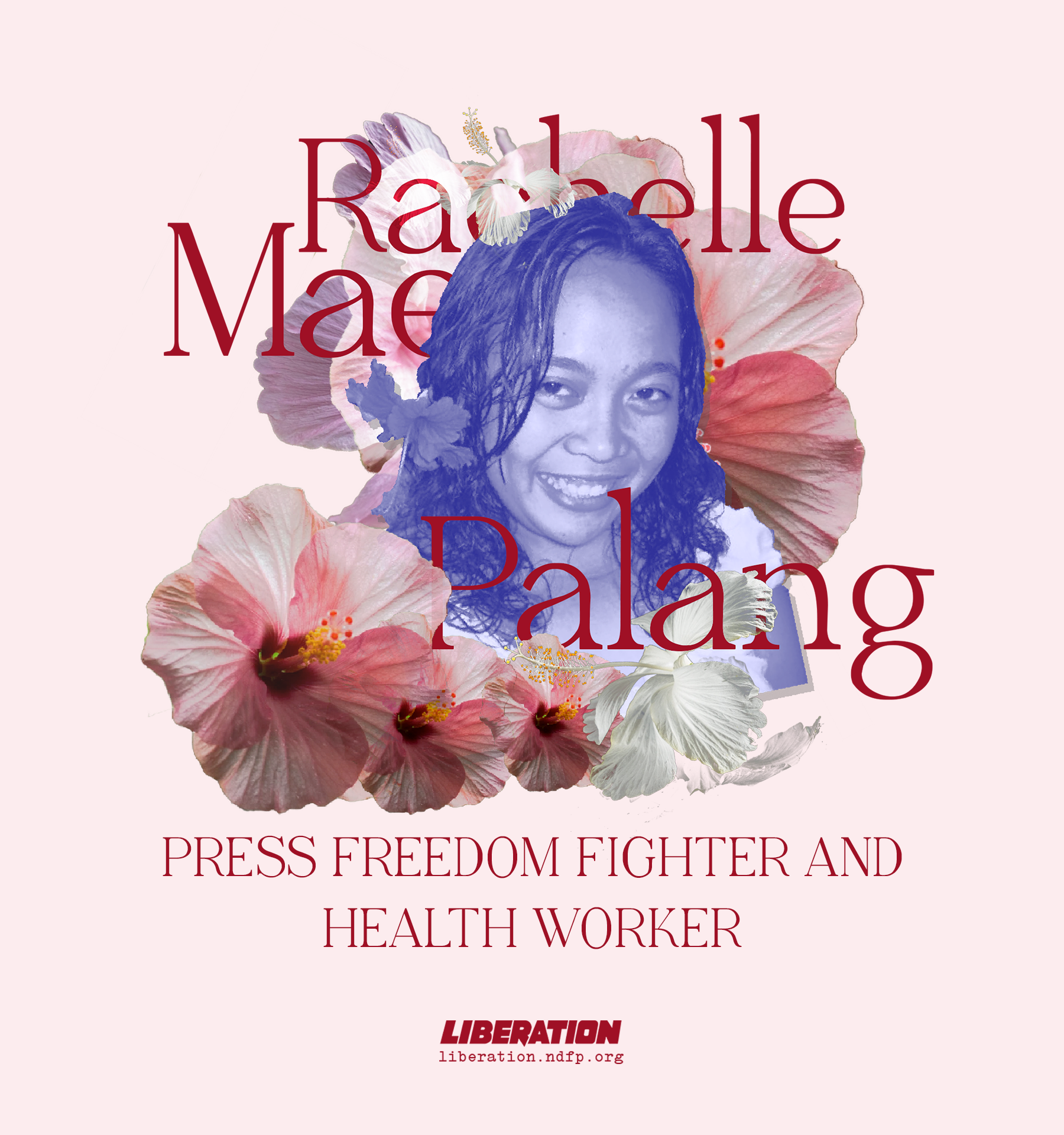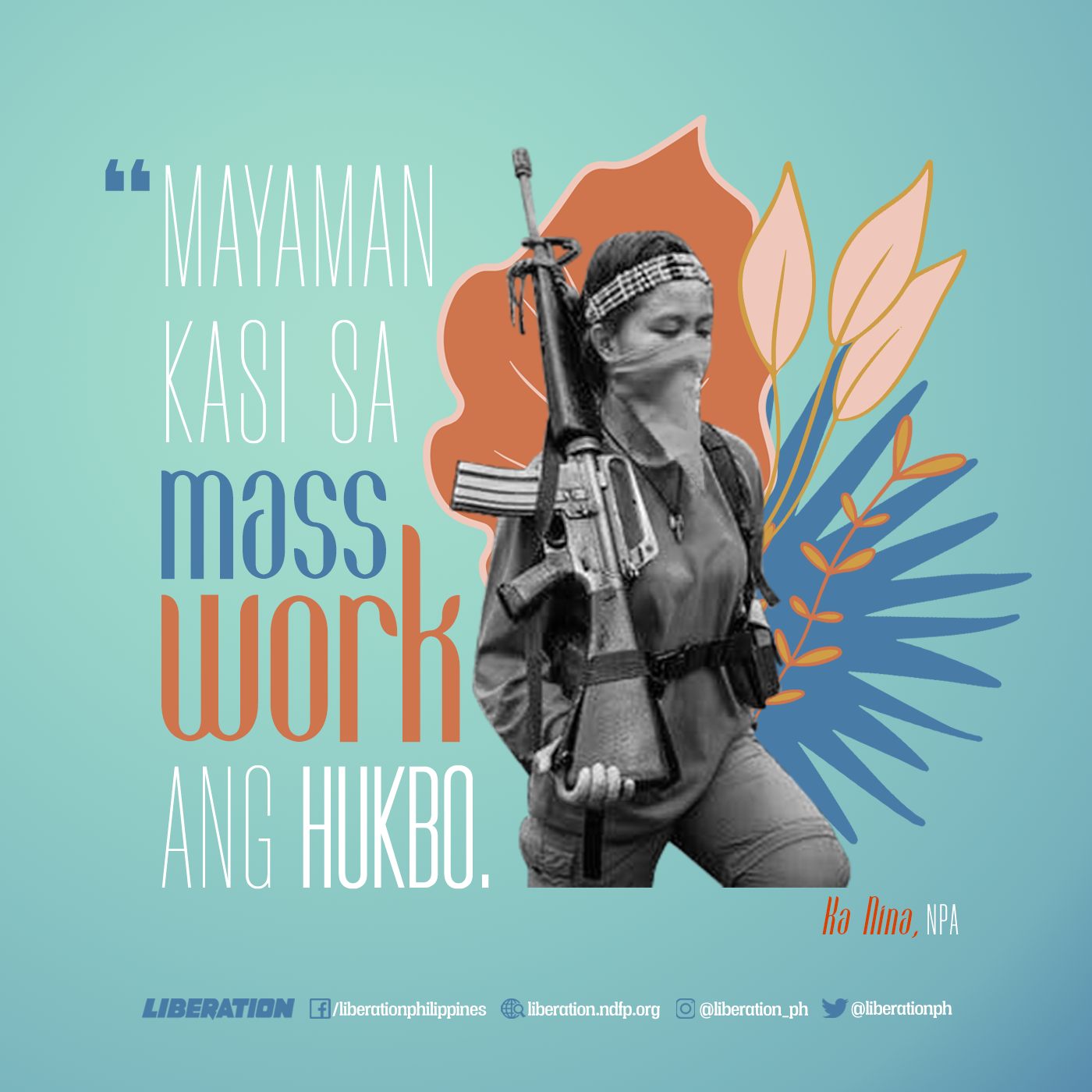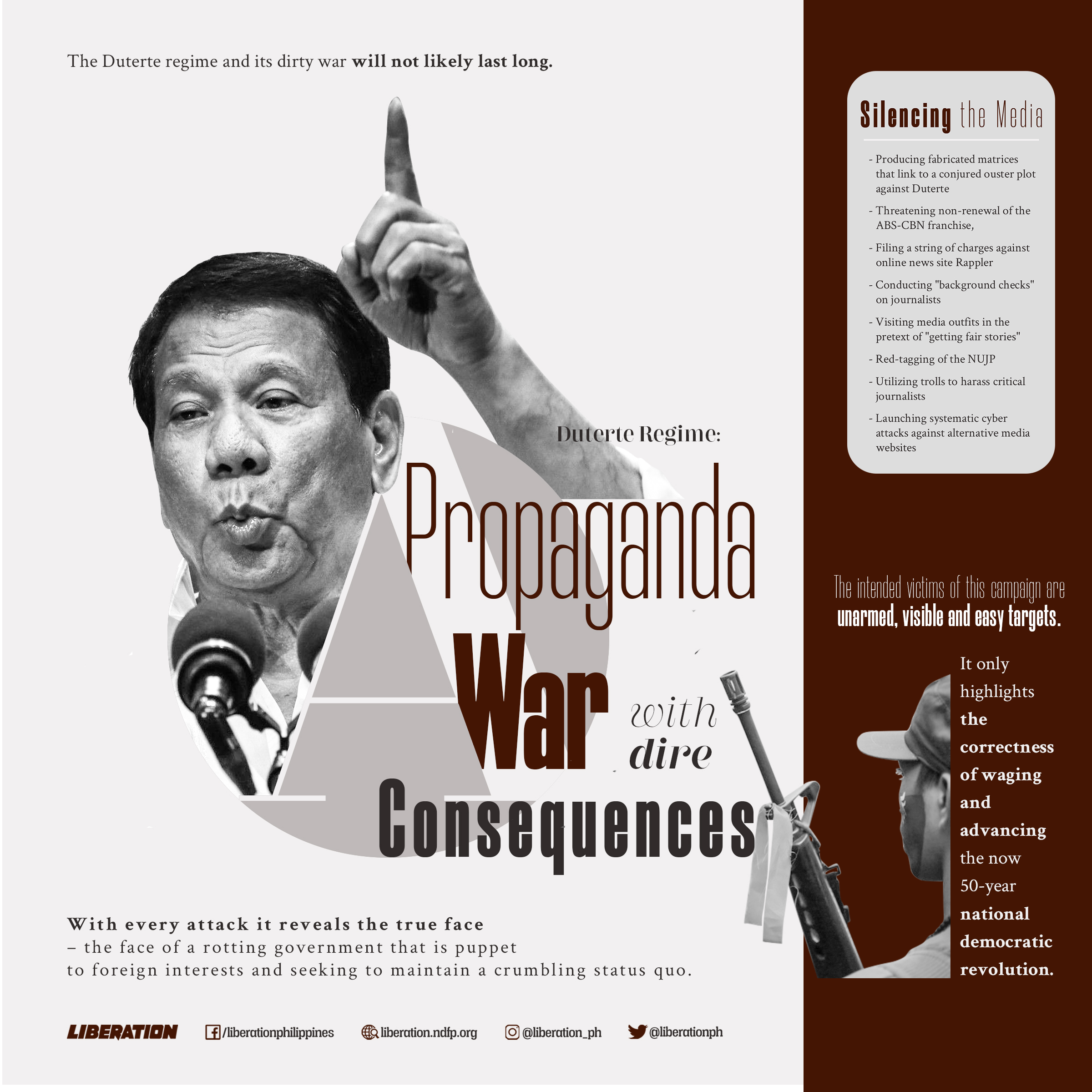Pure Joy with the Masses
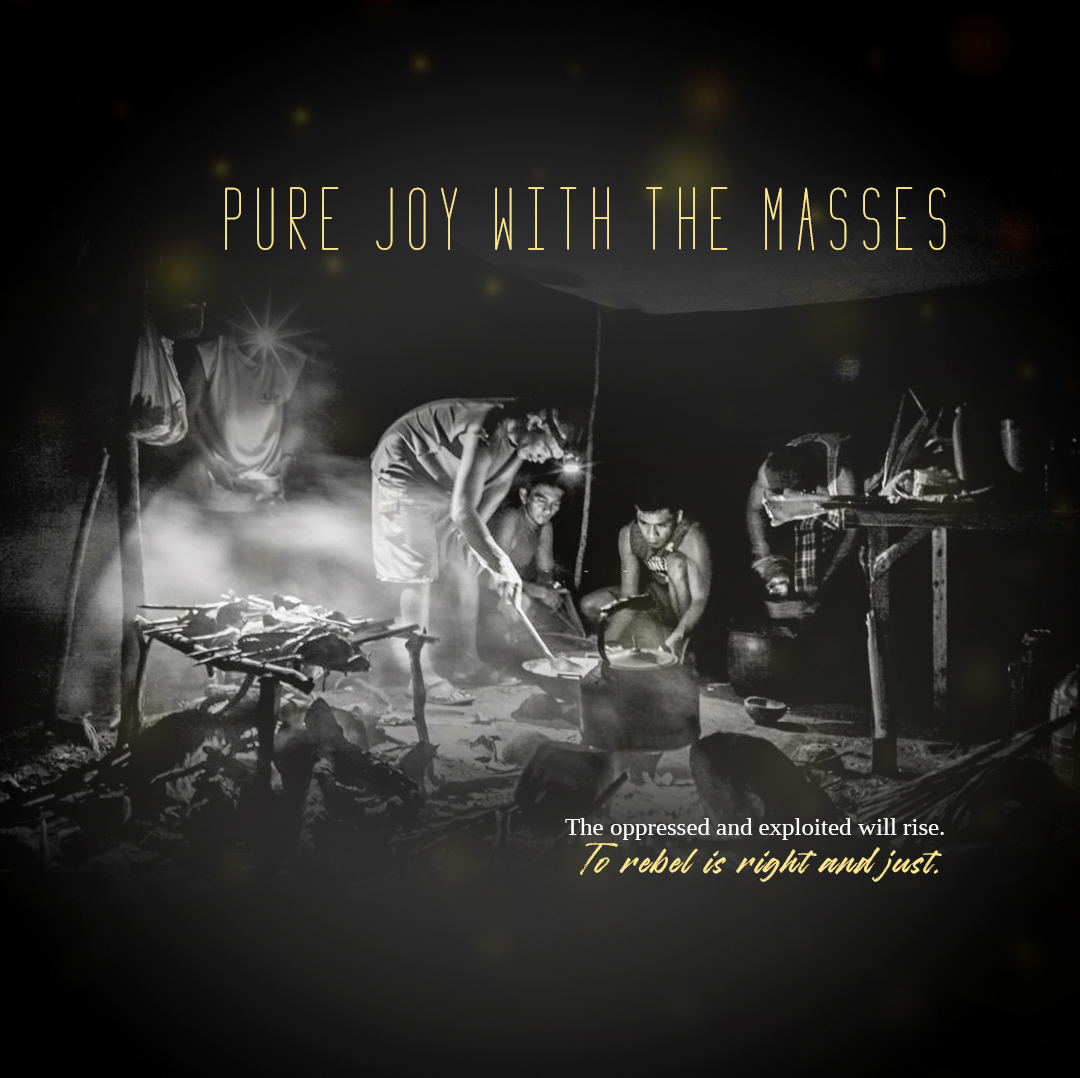
The start of the “ber” months signals the most celebrated holiday of the year in the Philippines. Jose Mari Chan’s song, “Christmas in Our Hearts” fills the airwaves. It is the season of hope in everyone’s heart, a season to rejoice. In the cities, malls and parks compete for the highest Christmas tree built. Dancing lights dazzle as people rush to buy gifts and noche buena items to feast on.
But it’s a different story in the countryside. Ka Ponsoy, a member of the NPA, in his account in Mga Kwentong Kasama, described what it’s like in the countryside and in the guerrilla zones:
Only a few communities celebrate Christmas as festive as in the cities. Some hang lanterns and Christmas lights where electric power is available, still full of hope. They also prepare special meals for the children who will come home for the holidays. However, to most people in the barrios, Christmas is just another day as their stomachs grumble no matter how arduous they toil the whole year round. Worst, typhoons usually lash in the last quarter of the year or some other unforeseen bane comes, depriving the farmers and fisherfolk their source of livelihood.
In the guerrilla zone, Ka Ponsoy found no difference. Sometimes they do cook for the occasion or the masses bring them some food. But most of the time, like most of the masses, they just sleep on Christmas’ eve.
A different kind of Christmas
During Ka Ponsoy’s first year in the people’s army, he would miss the “joyous” Christmas he was used to when he was still a civilian. But he would soon find out that December is not entirely cold and gloomy in a guerrilla zone. There was another reason to celebrate. Comrades and the masses are full of excitement over the most awaited day of the year—the commemoration of the founding anniversary of the Communist Party of the Philippines (CPP). The celebration is remarkable not because of its pomp. In fact, most of the time, it stands out in its simplicity. There are even occasions when the only food is camote (sweet potato) and balinghoy (cassava). Although when situation allows, allies from the town or city centers would send lechon or ham.
Through all these, there is no comparison to the warmth and happiness one will experience in the guerrilla zone. The smiles are real, the laughter profound even amid constant threat of military attacks. Everyone knows that the celebration is a testimony of another year of success and yearning. Another year to frustrate the enemies as the masses secure themselves, their dreams, and their future. This gives Ka Ponsoy a queasy twinge in his heart. They also pledged, that no matter what, they will continue the fight. This is the most exhilarating and memorable experience for Ka Ponsoy. Everyone is confident to face the new year with heaps of challenges to surmount, obstacles to surpass and problems to overcome. Since the anniversary celebration is the culmination of a year-long struggle, all are excited.
Preparing for D-day
Should the loads of work allow, preparation for the anniversary celebration starts around October or November. Discussions on the composition of the steering committee and the plans for the program commence. What will be the cultural presentations and who will perform? Who are the speakers, including those representing the different organizations? Likewise, who will participate in the military drill?
By December, actual preparations begin. Rehearsals for the cultural presentations and the drill are done. Technical requirements are ensured—flags, the stage, mural or backdrop, sound system, food, invitations. The masses are never left out in the invitation. No matter how simple the celebration is, be it in the dense forest or in a dilapidated structure in the coconut grove, whether there is special food, sound system, mural on stage or none, inviting the masses should not be missed out. Otherwise, they will feel offended and will nag the program organizers to no end.
On the Actual Day
The early hours of the actual day are already filled with excitement. During the opening salvo, all are jittery as the drill with the accompaniment of the song Internationale pushed on. The speakers and the cultural performers are all agog in the last minute of their practice.
The excitement of the masses are double than that of the comrades. They make sure to come early to the venue. At times, some even spend the night at the NPA camp so they won’t be late for the activities. They come in their best dress, no matter how simple. Even when it rains, and the path becomes muddy and the trek difficult, they would come. They even bring food to share.
During the program speakers are nervous, despite their having delivered the messages for the Party, the New People’s Army (NPA) and the National Democratic Front of the Philippines (NDFP) so many times before a huge crowd and the media. However, upon gaining composure, the intensity of the emotion and agitation they impart is inspiring and inciting. The speakers from the different organizations could not be outdone. In some occasions, comrades seize the opportunity to gather the masses for short discussions on the stand and principles of the revolutionary movement.
The performers in the program are a mix of people from the army, the masses, the elderly, and the children and youth. The lack of gracefulness does not hinder the performances of revolutionary dance. Off key and out of synch singing are not an issue as they render their songs with revolutionary spirit. Volunteers, or those not in the program, are given the chance to speak or perform. Cultural performances to celebrate the Party anniversary live up to what the Great Leader Mao Zedong had said: An army without culture is a dull-witted army, and a dull-witted army cannot defeat the enemy.
It is a delight that the celebration for this occasion is neither bound by time nor form. Even in militarized areas, comrades find unique ways to celebrate: a simple greeting to one another as they walk along, a warm smile or an embrace for the masses they meet.
Realization
In the cities, Jose Mari Chan’s song goes on:
“Let’s light our Christmas trees
For a bright tomorrow
Where nations are at peace”
But how could there be peace, in a screwed up world with its rotten system, where the oppressors and exploiters rule and tyranny and greed persist? The oppressed and exploited will rise. To rebel is right and just.
Through time, Ka Ponsoy came to understand there is no need for a lot of things—fiesta food, Christmas decors, money—to be happy. It is a different joy to know that comrades and the masses are united by one goal: to serve the people. Nothing compares to the jubilation seeing comrades and the masses who had been with through numerous tribulations and life’s storms, alive and smiling. Hope springs eternal where everyone loves the Party and the revolution.
Although at times, Ka Ponsoy still misses the Christmas he used to know, he will never exchange the happiness and the liberating spirit that he feels with every anniversary celebration of the Party, as well as those of the NPA and the NDFP, and other events and celebrations in the revolutionary movement. ### (Pat Gambao, adapted from “Mga Kwentong Kasama“, published by the Gintong Silahis Platung Pangkultura BHB-Bikol, 2022).


